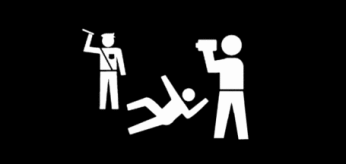In South Carolina, a man named Walter Scott was recently killed by a police officer during a routine traffic stop for a broken taillight.[1] His family was informed that the officer felt that his life was threatened by Scott’s actions, and felt compelled to use his gun.[2] His family didn’t think that account fit in with Scott’s personality, but had no other proof of what happened that day until someone approached them after a vigil held for Scott.[3] The man had videotaped the entire interaction between Scott and the police officer, and the footage told an entirely different story of what occurred when Scott was killed.[4] The officer has since been fired and is being charged with murder because of this video, which has brought up questions about the use of excessive police force and the necessity for documentation of interactions between community members and certain members of law enforcement.[5]
Considering the importance of this video in the case against Scott’s killer, advocates of police reform are seeing the “power of technological weapons” in the fight against excessive police force.[6] The smartphone camera is obviously the best tool at a citizen’s disposal, and phone videos of police interactions have been popping up in the news quite often.[7] Activists are taking another step, however, by developing phone apps to “streamline the process of capturing and broadcasting videos of police interacting with citizens.”[8]
One such app is called “Cop Watch,” which is an iPhone app that automatically begins recording when you click on the icon and automatically uploads whatever is recorded to YouTube when the video is done.[9] This will make it much easier for citizens to video interactions, and if officers try to confiscate the phone, the video can be uploaded to the internet with very little effort. As the app developer said – “when photographing the police during intense situations, people often get flustered – they may forget to hit record, or may not know how, or where, to upload a video.”[10] The is probably the first of many efforts to hold law enforcement more accountable for their actions.
[1] See Francis Robles & Alan Blinder, Seeing Path to Justice of Shooting on Bystander’s Phone, N.Y. Times (Apr. 8, 2015) available at http://www.nytimes.com/2015/04/09/us/cellphone-video-of-michael-slager-shooting-walter-scott-is-seen-as-a-path-to-justice.html?hp&action=click&pgtype=Homepage&module=first-column-region®ion=top-news&WT.nav=top-news&_r=0.
[2] See id.
[3] See id.
[4] See id.
[5] See id.
[6] Farhad Manjoo & Mike Isaac, Phone Cameras and Apps Help Speed Calls for Police Reform, N.Y. Times (Apr. 8, 2015) available at http://www.nytimes.com/2015/04/09/technology/phone-cameras-and-apps-help-speed-calls-for-police-reform.html?ref=technology&_r=1&gwh=A2438B783C187F32E0BB0E7777BC2F6A&gwt=pay.
[7] See id.
[8] Id.
[9] See id.
[10] Id.

